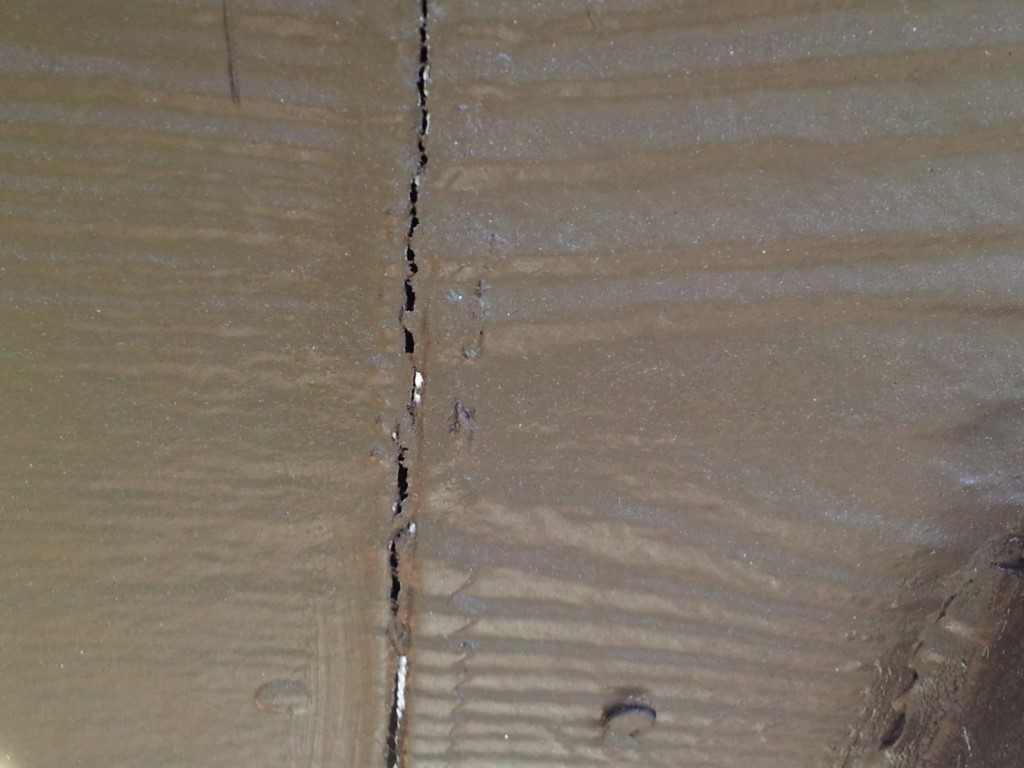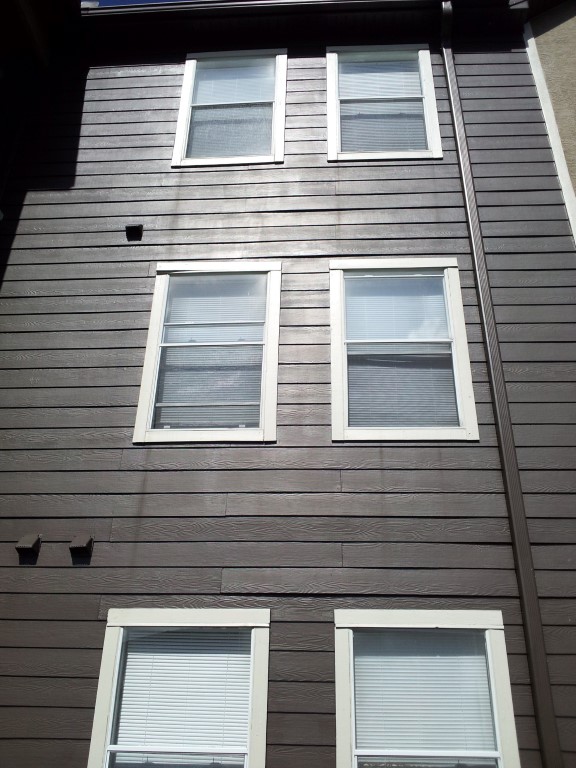Siding
Outside cladding is the first line of defenseSiding
This is a close up view of a butt joint on a fiber cement lap siding exterior wall. The material expands and contracts throughout certain times of the year with temperature and humidity changes. In most cases, there is an inadequate flashing behind the joint and the industry feels that the caulk/sealant will be enough to waterproof this joint when most manufacturers suggest to moderately butt the joints leaving no room to fill with sealant. If the sealant is used, it is just a matter of time for it to fail and allow water to enter the cavity. Most flashings on the market now don’t prevent water from penetrating and water flows freely down the cavity.
Architects and engineers have worked hard over the years to perfect the drainage plane behind the siding. There’s so many excellent products on the market now with the house wrap’s window flashings/tapes etc., they’remaking truly remarkable advances in the building science industry. It is unfortunate that the concern has been put so much on the house wrap and not so much on the first layer of defense, (the exterior cladding). We feel the house wrap should be the insurance policy for water that incidentally penetrates the exterior cladding rather than the first line of defense. Once the water penetrates the house wrap, in most cases it can cause mold and/or structural damage
Looking at the picture to the right,(fig 2) it is a distant view of (fig 1). The picture shows quite a few butt joints just above the windows between the floors. Even if the entire system was installed correctly with the house wrap, flashings and tapes, there will be so much stress on the system withwater flow that it’s just a matter of time before failure. It is so important to make sure the outside cladding is the first line of defense to shed a wind blown rain and allowing the house wrap to shed only the splash- in water from the overlaps.


